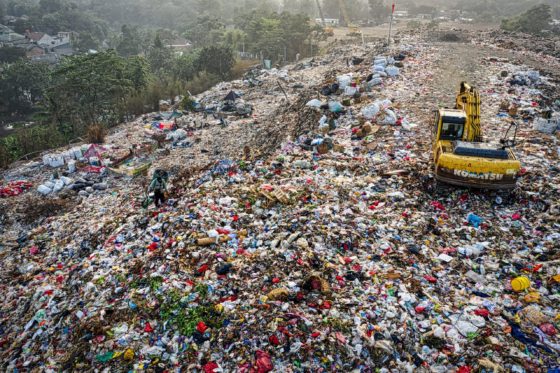
New evidence for low carbon alternative to incineration and landfill
Environmental campaigners have welcomed the findings of a report published today (2 December) by Zero Waste Scotland that shows that biostabilisation, a way of managing waste, has significant carbon savings over incineration and landfill.
Biostabilisation is a treatment method for managing waste where organic material is broken down in a controlled environment. This greatly reduces the carbon emissions from the waste. The report shows that each tonne of waste biostabilised emits the equivalent of 12kg of carbon dioxide, which is 20 times lower than sending that same waste to incineration.
Kim Pratt, circular economy campaigner at Friends of the Earth Scotland, said:
“We know that reducing and recycling are the most important ways of limiting the climate impact of waste.
“The Zero Waste Scotland report shows biostabilisation is a lower carbon option for managing non-recyclable waste compared to incineration or landfill. It adds to the growing body of evidence that incineration must be rapidly phased out if Scotland is to reduce its impact on the climate crisis. Policy makers must now act on the findings of the report and make sure that biostabilisation is economically viable.”
Shlomo Dowen, national coordinator at the UK Without Incineration Network (UKWIN) added: “Zero Waste Scotland has previously shown that incineration is a high-carbon option, and this new report demonstrates that incineration is far worse for the climate than biostabilisation. This makes it clear that there is no justification for building any new incineration capacity in Scotland. Instead, what we urgently need is an incineration exit strategy that looks to phase out existing burners as we increasingly reduce, reuse and recycle.”
The landfill ban prohibits all biodegradable waste going to landfill by 31 December 2025. Earlier this year, the Scottish Government committed to an effective moratorium on new incinerators, recognising their huge environmental and health impacts. Incinerators are responsible for some of the largest sources of climate emissions in Scotland.
The 2012 the Waste (Scotland) Regulations acknowledged there are two potential disposal routes for biodegradable waste once landfill is banned: biostabilisation and incineration. However, the same regulations create an artificial economic barrier to biostabilisation by requiring that biostabilised waste must pay the higher rate of landfill tax, whilst incinerator outputs are exempt.
Zero Waste Scotland report on the Climate Change Impacts of Burning Waste states “Sending one tonne of residual municipal waste to EfW in Scotland in 2018 emitted 246 kgCO2e”: https://www.zerowastescotland.org.uk/content/climate-change-impact-burning-municipal-waste-scotland
Zero Waste Scotland report on biostabilisation states the life cycle carbon impact of In-Vessel Composting with no RDF production is 12 kg CO2e per tonne of waste.
Calculation for biostabilisation being 20 times lower than incineration: 246/12 = 20.5
Friends of the Earth Scotland press release on the incineration ban: https://foe.scot/press-release/environmental-campaigners-welcome-ban-on-new-incinerators-in-scotland/
Ferret article on top 20 climate polluters, which includes the Dunbar and Millerhill incinerators: https://theferret.scot/rogues-gallery-climate-polluters-top-20-revealed/
Zero Waste Scotland waste composition analysis report which estimates 60% of Scottish residual waste could have been recycled with existing services: https://www.zerowastescotland.org.uk/composition-household-waste-kerbside
